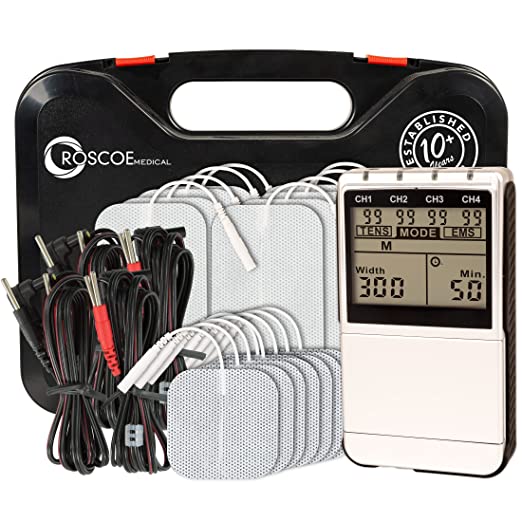The lower back is a critical area of the body that supports the spine and plays a significant role in our everyday movements. However, it is also prone to pain and discomfort due to various factors such as sedentary lifestyles, poor posture, and muscle imbalances. Fortunately, incorporating regular lower back stretches into your routine can help alleviate pain, improve flexibility, and promote overall spinal health. In this article, we will explore the importance of lower back stretches, their benefits, and some of the best stretches you can perform.
Importance of Lower Back Stretches
Lower back stretches are essential for maintaining a healthy spine and reducing the risk of developing chronic pain or injuries. The sedentary nature of many modern lifestyles, coupled with prolonged sitting and poor posture, can lead to muscle imbalances and tightness in the lower back. Regular stretching helps counteract these effects by improving flexibility and promoting proper alignment of the spine.

Sparthos Back Brace Immediate Relief from Back Pain, Herniated Disc, Sciatica, Scoliosis and more! – Breathable Mesh Design with Lumbar Pad- Adjustable Support Straps- Lower Back Belt- Size Large
Common Causes of Lower Back Pain
Before delving into the benefits of lower back stretches, it’s crucial to understand some of the common causes of lower back pain. These include:
- Muscle strain or sprain
- Herniated or bulging discs
- Arthritis or degenerative conditions
- Poor posture
- Sedentary lifestyle
- Obesity
- Stress and tension
By addressing these underlying causes, lower back stretches can effectively provide relief and prevent future episodes of pain.
Benefits of Lower Back Stretches
Regularly performing lower back stretches offers numerous benefits that can positively impact your overall well-being. Let’s explore some of these benefits in detail:
Improved Flexibility
One of the primary advantages of lower back stretches is improved flexibility. Flexibility plays a vital role in maintaining a full range of motion and preventing muscle imbalances. By stretching the muscles and soft tissues surrounding the lower back, you can increase your flexibility and enhance your ability to perform daily activities with ease.
Reduced Muscle Tension
Tight muscles in the lower back can lead to discomfort and restricted movement. Lower back stretches help release muscle tension and promote relaxation, allowing the muscles to return to their optimal length. This, in turn, can alleviate pain and stiffness in the lower back region.
Enhanced Posture
Poor posture is a common contributor to lower back pain. Regularly incorporating stretches that target the lower back can help improve posture by strengthening the muscles that support the spine. With better posture, you can minimize strain on your lower back and reduce the risk of developing chronic conditions such as degenerative disc disease or osteoarthritis.
Increased Blood Circulation
Performing lower back stretches stimulates blood flow to the muscles and tissues in the lower back area. Improved circulation helps deliver oxygen and nutrients to the muscles, promoting their health and aiding in the recovery process. It also helps flush out toxins and waste products, reducing inflammation and promoting a faster healing response.

Roscoe Medical TENS Unit and EMS Muscle Stimulator – 4-Channel OTC TENS Machine for Back Pain Relief, Lower Back Pain Relief, Neck Pain, Includes Case, Pain Relief, Muscle Recovery
Best Lower Back Stretches
Now that we understand the importance and benefits of lower back stretches, let’s explore some of the most effective stretches for this area:
- Cat-Camel Stretch: Start on all fours, arch your back up towards the ceiling like a cat, then lower your belly towards the ground, creating a gentle arch. Repeat this movement for several repetitions.
- Child’s Pose: Begin on your hands and knees, then sit back on your heels while extending your arms forward. Rest your forehead on the ground and hold the pose, feeling a gentle stretch in your lower back.
- Cobra Stretch: Lie on your stomach with your palms flat on the ground near your shoulders. Push through your hands to lift your chest off the ground, keeping your hips and lower body relaxed.
- Standing Forward Bend: Stand with your feet hip-width apart, then slowly bend forward from your hips, reaching towards your toes. Keep your knees slightly bent and allow your upper body to hang loose.
- Knee-to-Chest Stretch: Lie on your back, then bring one knee towards your chest while keeping the other leg extended. Hold the stretch for a few seconds, then switch legs.
- Piriformis Stretch: Lie on your back, cross one ankle over the opposite knee, then gently pull your lower leg towards your chest. You should feel a stretch in your buttocks and outer hip.
- Seated Spinal Twist: Sit on the ground with your legs extended in front of you. Bend one knee and cross it over the opposite leg, then gently twist your torso towards the bent knee, placing your hand on the ground behind you for support.
- Bridge Pose: Lie on your back with your knees bent and feet flat on the ground. Press through your feet to lift your hips off the ground, creating a bridge shape with your body.
- Pelvic Tilt: Lie on your back with your knees bent and feet flat on the ground. Gently tilt your pelvis upward, pressing your lower back into the floor. Hold for a few seconds, then release.
- Quadruped Arm and Leg Lift: Start on all fours, then extend one arm forward and the opposite leg backward, keeping your spine stable. Hold for a few seconds, then switch sides.
- Superman Stretch: Lie on your stomach with your arms extended in front of you and your legs straight. Lift your arms, chest, and legs off the ground simultaneously, engaging your lower back muscles.
- Hamstring Stretch: Sit on the ground with one leg extended and the other bent with the foot resting against the inner thigh of the extended leg. Lean forward from your hips, reaching towards your toes.
- Pigeon Pose: Begin in a push-up position, then bring one knee forward and place it behind your wrist on the same side. Extend your other leg straight behind you and lower your hips towards the ground.
- Hip Flexor Stretch: Kneel on one knee, with the other foot flat on the ground in front of you. Gently lean forward, stretching the front of your hip and thigh on the kneeling leg.
- Prone Press-Up: Lie on your stomach with your hands positioned near your shoulders. Press through your hands to lift your upper body off the ground, keeping your hips and lower body relaxed. Hold the stretch for a few seconds before slowly lowering yourself back down.
Precautions and Tips for Lower Back Stretches
While lower back stretches can provide numerous benefits, it’s important to approach them with caution and follow these precautions:
- Start Slowly: If you’re new to stretching or have a history of lower back issues, start with gentle stretches and gradually increase intensity over time.
- Listen to Your Body: Pay attention to how your body feels during the stretches. If you experience sharp pain or discomfort, ease off the stretch or try a modified version.
- Warm-Up: Prioritize a light warm-up before stretching to prepare your muscles and increase blood flow to the area. This can include gentle aerobic exercises or a brief walk.
- Avoid Bouncing: When stretching, avoid bouncing or jerking movements, as they can strain the muscles and increase the risk of injury. Instead, focus on smooth and controlled movements.
- Maintain Proper Form: Proper form is crucial for maximizing the effectiveness of the stretches and preventing unnecessary strain. Follow the instructions carefully and seek guidance from a qualified professional if needed.
- Breathe and Relax: Remember to breathe deeply and relax your body while stretching. Tension or shallow breathing can hinder the effectiveness of the stretch.
- Stay Consistent: Consistency is key when it comes to reaping the benefits of lower back stretches. Aim to incorporate them into your routine at least a few times per week for optimal results.

HONGJING Decompression Back Belt for Lower Back Pain Relief- Spine Reset Device Lumbar Support for Lifting, One Size Fits 29-49 Waist
Incorporating Lower Back Stretches into Your Routine
To make lower back stretches a regular part of your routine, consider the following tips:
- Schedule Regular Stretching Sessions: Set aside dedicated time for stretching, such as in the morning or before bedtime. Consistency is important for long-term benefits.
- Mix it Up: Vary your stretches to target different muscles and avoid boredom. Incorporating a variety of stretches will help address different areas of the lower back and improve overall flexibility.
- Combine with Strength Training: Pairing lower back stretches with exercises that strengthen the core and back muscles can provide comprehensive support for the lower back and promote better stability.
- Seek Professional Guidance: If you have specific lower back conditions or concerns, consult with a healthcare professional or a qualified fitness trainer who can provide personalized guidance and modifications.
- Listen to Your Body: Pay attention to how your body responds to different stretches. Modify or switch exercises if you find certain stretches more beneficial or comfortable.
Incorporating these strategies into your routine will help ensure that you consistently reap the benefits of lower back stretches while minimizing the risk of injury or discomfort.
Conclusion
Lower back stretches play a crucial role in maintaining a healthy spine, reducing pain, and improving flexibility. By incorporating a variety of stretches into your routine and following proper form and precautions, you can enhance the health of your lower back, alleviate discomfort, and promote overall well-being.
Remember to listen to your body, start slowly, and stay consistent. With regular practice and dedication, you can enjoy the benefits of a supple and pain-free lower back.
FAQs
1. How often should I perform lower back stretches?
Ideally, you should aim to perform lower back stretches at least a few times per week. Consistency is key to experience the benefits. However, if you’re experiencing acute pain or have specific conditions, it’s best to consult with a healthcare professional for personalized recommendations.
2. Can I do lower back stretches if I have a previous lower back injury?
If you have a history of lower back injury, it’s essential to proceed with caution. Start with gentle stretches and listen to your body. If any particular stretch causes pain or discomfort, modify or avoid it. It’s always recommended to consult with a healthcare professional or a physical therapist who can provide tailored guidance based on your specific condition.
3. Can lower back stretches help with sciatica pain?
Yes, certain lower back stretches can be beneficial for relieving sciatica pain. Stretches that target the piriformis muscle, such as the piriformis stretch and pigeon pose, can help alleviate pressure on the sciatic nerve and reduce pain. However, it’s important to consult with a healthcare professional to determine the most appropriate stretches for your specific case of sciatica.
4. Are there any specific stretches I should avoid if I have a herniated disc?
If you have a herniated disc, it’s crucial to exercise caution and avoid any stretches that exacerbate your symptoms. Generally, stretches that involve excessive forward bending or twisting motions may put additional strain on the discs and should be avoided. It’s best to consult with a healthcare professional who can provide guidance on suitable stretches and modifications for your condition.
5. Can I perform lower back stretches if I’m pregnant?
Lower back stretches can be beneficial during pregnancy to alleviate discomfort and maintain flexibility. However, it’s essential to choose stretches that are safe and appropriate for pregnancy. Gentle stretches that avoid placing pressure on the abdomen or involve deep twisting motions are generally recommended. Consult with your healthcare provider or a prenatal fitness specialist for guidance on safe stretches during pregnancy.
Incorporating regular lower back stretches into your routine can significantly improve the health and flexibility of your lower back, reduce pain, and enhance overall well-being. Remember to approach stretching with care, listen to your body, and seek professional guidance if needed. With consistent practice and proper form, you can enjoy the benefits of a strong, supple, and pain-free lower back.

